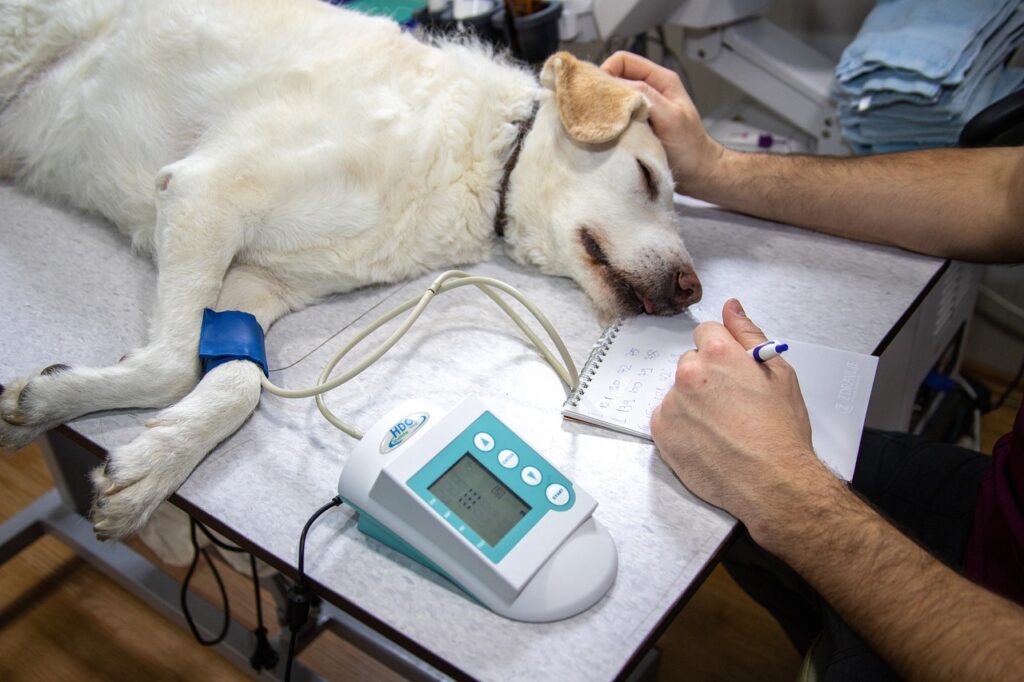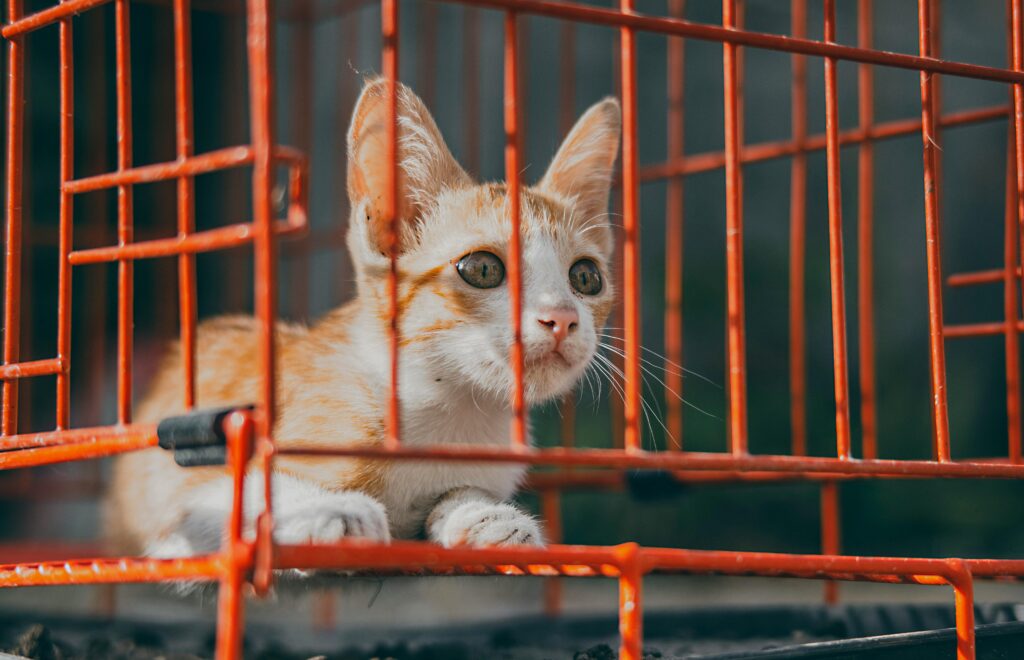The first week with a new pet is crucial for building trust, setting routines, and ensuring a smooth transition. Whether you have adopted a puppy, kitten, or rescued animal, understanding their needs from day one will help you foster a loving bond. In this guide, we will explore the best strategies to ensure your pet’s first week is positive and stress-free.
First Week with a New Pet ,Preparing for Your Pet’s Arrival
Bringing a new pet into your life is like opening your heart to a little bundle of joy, curiosity, and endless love. Whether it’s a playful puppy, a mischievous kitten, or a furry friend of another kind, their arrival marks the beginning of a beautiful journey. But before those tiny paws step into your home, a little preparation can go a long way in making them feel safe, loved, and right at home.
Think of it like preparing for a guest—except this one might chew on your shoes, chase their tail, or curl up in your lap for a nap. The key is to create a space where they can thrive, explore, and feel like they truly belong.
The Essentials: Setting the Stage for Your Pet’s New Life

Let’s get things started with the essentials-the must-haves that will make your pet’s transition smooth and comfortable.
Food and Water Bowls
Every pet needs their own dining spot. Choose bowls that suit their size and personality—sturdy ceramic or stainless steel for the enthusiastic eaters, or shallow dishes for cats who prefer not to touch their whiskers to the edges. If you’re bringing home a puppy, consider a non-slip mat to keep mealtime messes to a minimum.
High-Quality Pet Food
Just like us, pets thrive on good nutrition. Before stocking up on kibble or cans, have a chat with your vet to figure out the best diet for your new companion. Whether it’s grain-free, high-protein, or specially formulated for their age and breed, the right food will keep their tail wagging or their purr motor running.
A Cozy Corner to Call Their Own
Now, imagine going into a new world-it’s overwhelming, right? Your pet will appreciate having a cozy spot to retreat to when they need a break. A soft bed, a fluffy blanket, or even a crate-for dogs-can become their safe haven. For cats, consider a quiet nook with a warm bed or a perch by the window where they can watch the world go by.
Toys and Enrichment Activities
Toys aren’t just for fun-they are very much an important part of your pet’s mind-sharpening, energy-spewing process. Your dog may go crazy over that squeaky toy or the puzzle feeder, and a feather wand or crinkly ball does wonders for a cat. This helps ease anxiety, as it provides an avenue to dissipate it and stops them from being bored.
Safety First: Collars, Leashes, and ID Tags
Before your pet steps outside, make sure they’re equipped with a collar and ID tag that includes your contact information. A leash is a must for dogs, and if you’re bringing home a curious cat, a harness might come in handy for supervised outdoor adventures. And don’t forget about microchipping—it’s like a safety net that ensures your pet can always find their way back to you.
House Training Essentials
For cats, a litter box is non-negotiable. Choose one that’s spacious and easy to clean, and place it in a quiet, accessible spot. If you’re welcoming a puppy, stock up on training pads to help with those early accidents. Patience and consistency are key—soon enough, they’ll get the hang of it.
Grooming Supplies
Cleanliness and grooming aren’t just about looks; it’s about their health and comfort. You need a good brush, pet-safe shampoo, and nail clippers. For dogs, you can add ear cleaning solution and a toothbrush into the mix, while for cats, a grooming glove or a deshedding tool will keep their coat nice and shiny.
Health and Wellness Prep
The health of your pet is important; therefore, after some time following their arrival, pay a visit to a veterinary doctor to have them checked. Bring with you any available medical records. You will want to discuss vaccinations, preventives, and neutering/spaying. You should also look into getting insurance-it’s like having a safety net to catch those unexpected bumps in life.
Creating a Pet-Friendly Home
Before your pet enters your home, take some time to look at it from his perspective. Hide electrical cords, fasten down loose items, and take away things that might be poisonous, like toxic plants or objects your pet might swallow. Allow cats multiple levels to climb and peruse by placing cat shelves or cat trees around. For dogs, ensure that a safe outdoors area is provided for them or a regular walk routine to burn off energy.
First Days: Building Trust and Bonding
The moment your pet steps into your home, they will be looking up to you for guidance on everything for reassurance. Allow them to get familiar with this new setting-some plunge right in, while others take time to grow warm. Again, play, cuddle, and keep quiet time with them.
Establish a routine as early as possible. The same times for meals, a walk, and playtime will give your pet confidence and a sense of security. And don’t forget the love-part of being a member of the family.
Setting Up a Safe and Comfortable Space

Image by Gundula Vogel from Pixabay
Pets need time to adjust to their new surroundings. Create a designated area where they can feel secure and relaxed.
Choosing the perfect spot for their bed
Every pet needs a cozy corner to call their own. Start by placing their bed or crate in a quiet, low-traffic area of your home. This could be a corner of the living room, a spot in your bedroom, or even a dedicated nook in a spare room. The goal is to create a space where they can unwind without too much noise or activity.
For dogs, a crate can be a sanctuary—provided it is large enough for them to stand, turn around, and lie down comfortably. Place a soft blanket or bed inside to make it even more appealing. Cats often like to have a little height: try setting their bed on a high shelf or windowsill where they can see the world but feel safe.
Introducing Them to Their New Home
When your pet first arrives, it’s tempting to show them every room in the house right away. But for them, it’s better to take things slow. Start by confining them to one room-the one where their bed, food, and water are located. This gives them a chance to get their bearings without feeling overwhelmed.
Once they appear to become comfortable with their first space, it is time to gradually expose them to the rest of the house. Do monitor their body language; if they become apparently nervous or apprehensive, let them take their own time in expanding their territory. For example, when dealing with cats, open their room door and allow them to explore at their own pace. With your dog, you can take him around the house by his leash, but stay in each room and give lots of praise.
Pet-Proofing Your Home
Before your pet has the opportunity to start investigating, take another look around your home from his perspective. What seems harmless to you may be really dangerous to him. Here are a few things to consider:
- Tuck away electrical cords: Puppies and kittens love to chew, and exposed wires can be perilous. Employ cord covers or tape them in wall areas for prevention from the reach of the pet.
- Secure loose items: Small items, such as coins, rubber bands, or children’s toys, are choking hazards. Make sure these are stored safely away.
- Remove toxic plants: Many common houseplants, like lilies, pothos, and philodendrons, are toxic to pets. Do a quick check to ensure your greenery is pet-friendly.
- Block off unsafe areas: Use baby gates or closed doors to keep your pet away from areas like the laundry room, garage, or any space with chemicals or sharp objects.
Keeping Them Entertained and Engaged
Boredom and anxiety can rapidly set in once your pet has inadequate mental and physical stimulation. That’s where interactive toys come in. Dogs will be endlessly fascinated by such puzzle toys or even treat-dispensing balls, which work their brains to get a dog mentally sharp. Cats may find entertainment in feather wands, laser pointers, or even simply a cardboard box to explore.
Rotate their toys regularly to keep things fresh and exciting. And don’t forget the power of playtime-spending a few minutes each day engaging with your pet can strengthen your bond and help them feel more at ease in their new environment.
Creating a Calming Atmosphere
A quiet space is great for pets, primarily shy or anxious ones. Try a pheromone diffuser for cats, Feliway, or for dogs, Adaptil, to help reduce stress. Soft, gentle background music or white noise also works very well for creating a relaxed space, especially if your home is generally noisy.
Hiding places, such as a hooded bed or cardboard box, can provide cats with feelings of safety. For dogs, something comfortable and reassuring while owners are away from them, like an old blanket or a body scent on an article of their owner’s clothing, may soothe them.
Patience Is Key
Remember, adjusting to a new home takes time. Some pets might settle in within a few days, while others may need weeks to feel completely comfortable. Be patient and let them set the pace. Offer plenty of love, reassurance, and positive reinforcement as they explore their new surroundings.
In building a safe and comfortable space, you are not only helping your pet get acclimatized but also laying a very deep foundation for a lifetime of trust, happiness, and companionship. Before you know it, they will be running the household, filling your home with laughter, love, and the unmistakable joy that only a pet can bring.
Establishing a Routine

Image by Gundula Vogel from Pixabay
Predictability helps the pet feel secure, thus lowering anxiety and making adaptation to the new home smoother. Animals do love routines, and when they can predict events, they tend to be less stressed and form healthy patterns, thus adapting easily into surroundings. You will come up with a regular daily schedule that is steady and non-threatening to your animal.
Feeding: Providing Regular and Balanced Meals
Feeding your pet at the same time every day ingrains in them a sense of security and normalcy. Regular mealtimes help to not only normalize digestion but also provide confidence in a pre-set routine that your pet can rely on.
It is vital to choose the consistent feeding schedule that will meet the age of your pet, breed, and its dietary needs. Puppies and kittens can have multiple small meals a day, while pets typically eat twice daily. Create a designated eating area that creates a familiar, nonstressful place for your pet to eat with no distractions.
It’s about a complete diet for better health and fresh water always, but without excessive treats or table scraps that disrupt their diet and result in obesity and digestive disorders.
A schedule will also help with house training and behavioral control as they come to understand exactly when they should eat.
Exercise: Keeping Your Pet Active and Engaged
Regular exercise is very important for maintaining your pet’s physical health and mental well-being. It helps prevent obesity, reduces anxiety, and strengthens the bond between you and your pet.
Daily walks, playtime, and mental stimulation can keep the dogs occupied and happy. Exercise length and intensity should be breed, age, and energy specific. Cats require interactive games involving toys, laser pointers, and climbing structures.
Smaller pets also need exercise through time outside of the cage while being supervised, or enrichment such as tunnels and toys. The mix of exercise and mental challenges keeps your pet happy and engaged.
Bathroom Breaks: Reinforcing Good Habits
Frequent and regular bathroom breaks are very much necessary, mainly for young pets or those just getting used to a new home. Proper timing will prevent any accidents and create good habits.
For dogs, regular outdoor trips, especially after meals, naps, and play sessions, encourage good habits. Puppies may need more frequent breaks, while adult dogs typically require them every few hours. Cats need a clean, accessible litter box in a quiet space, ensuring they feel comfortable using it.
Using verbal cues, such as “Go potty,” can help pets associate words with bathroom breaks. Rewarding successful trips outside or to the litter box with praise or a small treat reinforces good behavior. Keeping a routine allows pets to learn when and where they should relieve themselves, reducing accidents and stress.
Training Sessions: Encouraging Good Behavior Through Positive Reinforcement
Training is an important part of establishing a routine, helping your pet understand expectations and boundaries while strengthening your relationship.
Through keeping training sessions short and positive, your puppy remains engaged and doesn’t get frustrated. Reward-based training-using treats, praise, or toys-will encourage learning and strengthen good behavior. Patience and consistency are key; learning takes time.
Basic commands, such as “sit,” “stay,” and “come,” can be taught early in life to instill good manners in dogs. Positive reinforcement techniques also work with cats. They can learn to perform tricks, such as coming when called and scratching on a scratching post instead of the furniture. Reinforcement throughout the day-for example, doing commands in the context of daily activities-helps enforce lessons naturally.
Sleep: Encouraging Rest in a Safe and Comfortable Space
Just like humans, pets need regular sleep to stay healthy and happy. Ensuring they have a designated sleeping area promotes a sense of security and prevents restlessness.
A comfortable bed or crate placed in a quiet part of the house creates a restful environment. Keeping bedtime consistent allows your pet to recognize when it’s time to go to sleep. Steer clear of late-night excitement like loud noises or rowdy games that could discourage rest.
A soothing bedtime routine may include dimming the lights or providing a soft toy to let your dog know it is time for sleep. Crate training for dogs can provide a den-like retreat, thereby enhancing security feelings. Good sleeping habits prevent behavioral problems that occur due to sleep deprivation and allow your pet to wake up fresh and ready to go.
Building Trust and Bonding
Gaining your pet’s trust takes patience and gentle interaction. Here are some key tips:
- Let them approach you first – Avoid overwhelming them with attention.
- Use a calm voice and slow movements – Sudden actions may cause fear.
- Offer treats and praise – Reward positive behavior.
- Spend quality time together – Engage in play or quiet companionship.
- Be patient – Each pet adapts at their own pace.
For more insights, check out our guide on How to Gain a Pet’s Trust.
Monitoring Health and Behavior

Image by Mirko Sajkov from Pixabay
The first week with your new pet is all excitement, cuddles, and discoveries. Within the joy, however, attention needs to be given to the state of their health and general behavior. Like human beings, pets could also be stressed out, anxious, or even get sick as they adapt to their new surroundings. Stay observant and proactive so your furry buddy can stay happy, healthy, and comfortable when getting into the groove in the new home.
What to Watch For: Key Signs of Health and Behavior Changes
Pets can’t tell us when something’s wrong, so it’s up to us to pay attention to their cues. Here are some important signs to monitor during those first few days and beyond:
Appetite Changes
A healthy pet is usually a good eater. However, in case your new friend has stopped eating or, on the contrary, has overeaten, that becomes an alarm. Loss of appetite may signify stress, anxiety, or even disease, while overeating can denote imbalances in nutrition or behavioral problems. Observe their eating habits and consult your vet if you notice anything unusual.
Lethargy or Unusual Tiredness
While it is quite normal for the pets to remain overwhelmed and tired for their initial days, excessive letharginess or sudden unavailability of energy might indicate some severe issue. If your pet acts unusually slow, shows no interest in playtime, or sleeps much more than usual, this may need to be taken further.
Excessive Hiding or Aggression
Hiding is a common behavior among pets, especially cats and dogs that are shy, when they are feeling uncertain. But if your pet always hides, refuses to interact, or reacts aggressively-such as growling, hissing, or snapping-then this could be because of fear or anxiety. Provide them with time and space for adjustment, but if the behavior persists, it would be best to seek advice from a vet or a professional behaviorist.
Gastrointestinal Problems
An upset stomach is normal when in a new home, but persistent diarrhea, vomiting, or constipation are not to be overlooked. These could either be stress, a sudden change in diet, or an underlying health issue. Make them have access to fresh water and closely watch your pet’s condition. When the symptoms do not improve within a day or two, it is already time to call the vet.
Other Things to Look For
- Coughing, sneezing, or discharge from the eyes and/or nose: This could indicate a respiratory infection or allergies.
- Excessive scratching or licking: This may indicate skin irritation, flea infestation, or anxiety.
- Changes in bathroom behavior: Straining to urinate or defecate, or accidents in the house, may indicate a health issue.
Why an Early Visit to the Veterinarian is Crucial
Even if your pet seems perfectly healthy, scheduling a vet visit within the first few days of bringing them home is a must. This initial check-up serves several important purposes:
- Health Assessment: Your vet will perform a thorough physical exam to check for any underlying health issues that might not be immediately obvious.
- Vaccinations: If your pet isn’t already current on shots, your vet can establish a vaccination schedule that will help protect your pet from certain diseases.
- Parasite Prevention: Your vet can check your pet for fleas, ticks, and worms and recommend preventive treatments to keep your pet parasite-free.
- Nutrition and Diet Counseling: Your veterinarian will be able to recommend the most appropriate diet for your pet based on age, breed, and lifestyle.
- Behavioral Information: If you have noticed anything concerning, your vet can give you advice or refer you to a behaviorist for further assistance.
Creating a Health Monitoring Routine
To stay on top of your pet’s health, consider keeping a simple journal or log during their first few weeks. Note their eating habits, energy levels, bathroom routines, and any unusual behaviors. This can help you spot patterns or changes that might need attention. It’s also a great way to track their progress as they settle in and become more comfortable.
When to Seek Help
Though some adjustment issues are normal, it’s always better to err on the side of caution when it comes to your pet’s health. If any of the following happen, never hesitate to contact your vet, including:
- Persistent vomiting or diarrhea
- Failure to eat or drink for over 24 hours
- Evidence of pain: whining, limping, reluctance to move
- Labored breathing or heavy coughing
- Sudden change in behavior such as aggression or extreme fear
A Little Love Goes a Long Way
Most importantly, remember that your pet looks up to you for comfort and reassurance in this transition. Give them all the love, patience, and understanding they need while they get used to their new life. By monitoring their health and behavior closely, you are not only keeping them safe but showing them they are truly loved and wanted.
As time passes, you will get to see their true nature. Those tentative steps now will be confident strides, and before you know it, your house will ring with the sound of pitter-patter and the warmth of their presence. After all, this is just the beginning of a beautiful journey together.
Conclusion: Enjoying Your New Companion
The first week with a new pet sets the foundation for a strong bond and a happy life together. By preparing your home, establishing routines, and being patient, you will ensure a smooth transition for your furry friend. If you found these tips helpful, feel free to share this article and explore more resources on pet care!
Your pet’s first week is just the beginning of an incredible journey together! What challenges did you face during this time, and how did you overcome them? Share your stories in the comments below—we’d love to hear from you!
If you found this guide helpful, don’t forget to share it with fellow pet parents or explore our related posts:
For more expert tips, subscribe to our newsletter and join a community of passionate pet lovers. Together, let’s make every pet’s transition into their forever home a success! 🐾





